Selecting a cultivation system was never easy. Even when plough-based systems were the only option, there was a range of tools and techniques to be chosen from, which, depending on soil type and condition, could significantly affect crop establishment and yield. Today the challenge is greater, with a range of non-plough systems on offer, each with their own attributes.
While creating a seedbed for good establishment is still critical, other criteria such as cost and sustainability in continuous cropping systems must be considered, making selection even more difficult. The demonstrations at Crops & Cultivation will provide an excellent opportunity to see what each of the systems does and for discussion and consideration of cultivation systems.
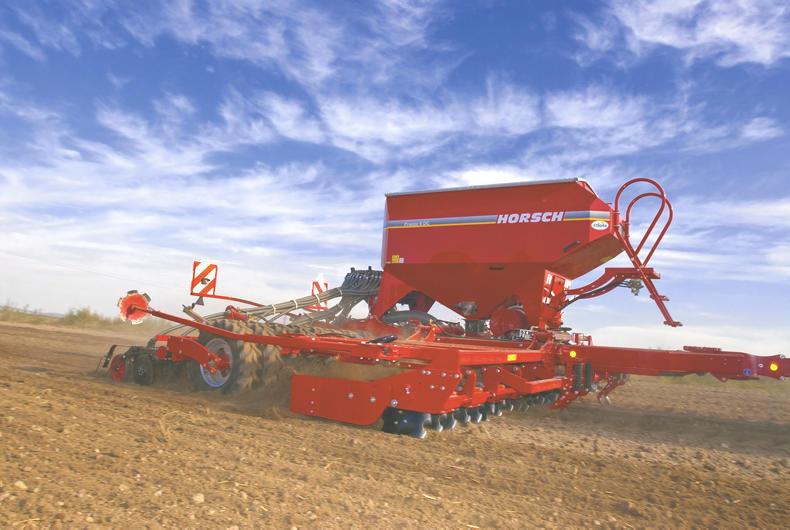
Why cultivate the soil?
We cultivate to provide good conditions for seed placement, crop establishment and subsequent growth. The objective is to modify aggregate size, pore space and density while retaining soil moisture.
However, the choice of cultivation system affects:
Cultivation systems
One of the big challenges with cultivation systems is their description and definition. The systems are normally defined by their primary tillage operation, eg ploughing, minimum tillage, direct drill etc. There are two primary challenges however:
When describing a system, it is therefore important to state the depth and intensity of cultivation that is involved.
Systems used in Ireland
Commonly used systems in Ireland include:
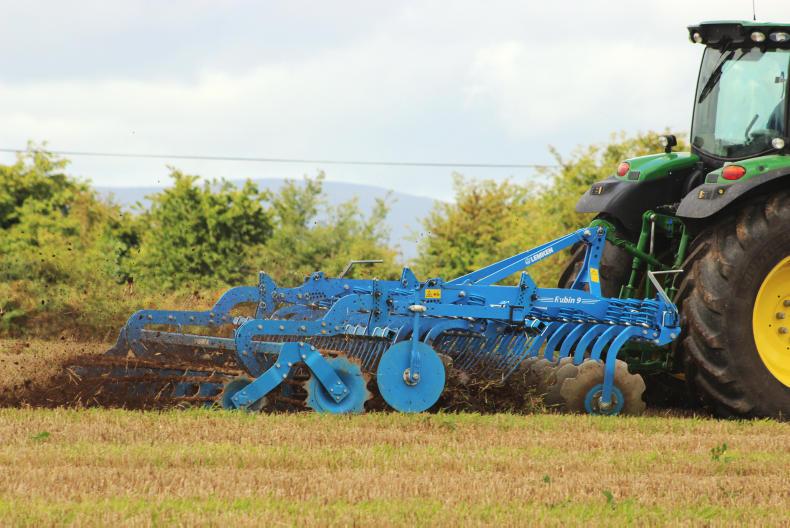
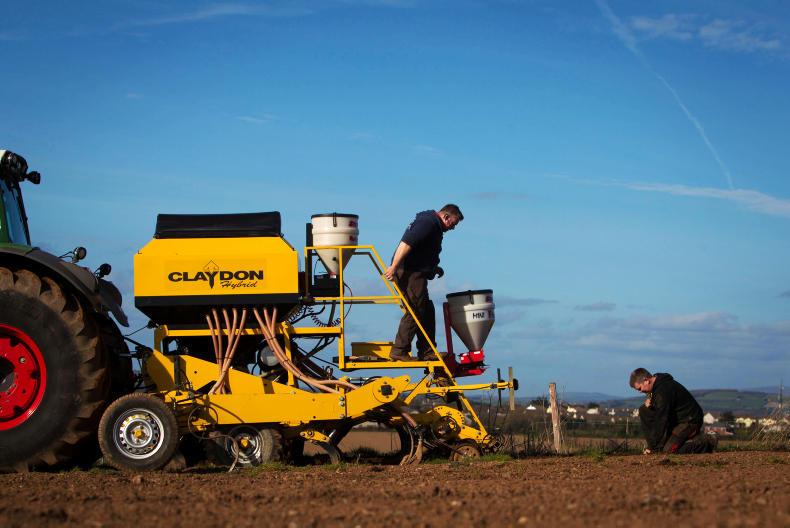
Cultivation systems research
Research on cultivation systems is not simple. The cultivation system used can have many different effects (other than on yields) which may affect sustainability and the ability to achieve viable yields in the longer term. Consequently, longer-term trials are required. Also climate, soil types and yield potential can affect the relative performance of cultivation systems. Many of the reduced cultivation systems (min-till, direct-drill, etc) were developed in regions where water conservation is vital and cereal yield potential is lower than in Ireland. Consequently, the lower operating costs and ability to conserve water can make these systems relatively more attractive in those regions. A summary of Irish (Oak Park) and international research for cultivation systems in climates like Ireland follows.
Impact on yields
With winter cereals, in the absence of grass weed problems, well-managed min-till systems will give similar yields to plough-based systems in most years. However, wet autumns can present a challenge, particularly if shallow cultivation hinders near-surface drainage, this negatively affects yields, both in trials (Fig 1), and commercially. Many growers now cultivate deeper to avoid this problem, but this reduces some of the cost and sustainability advantages of the system. Earlier sowing can help avoid these problems, but can compound grass weed and autumn disease problems.
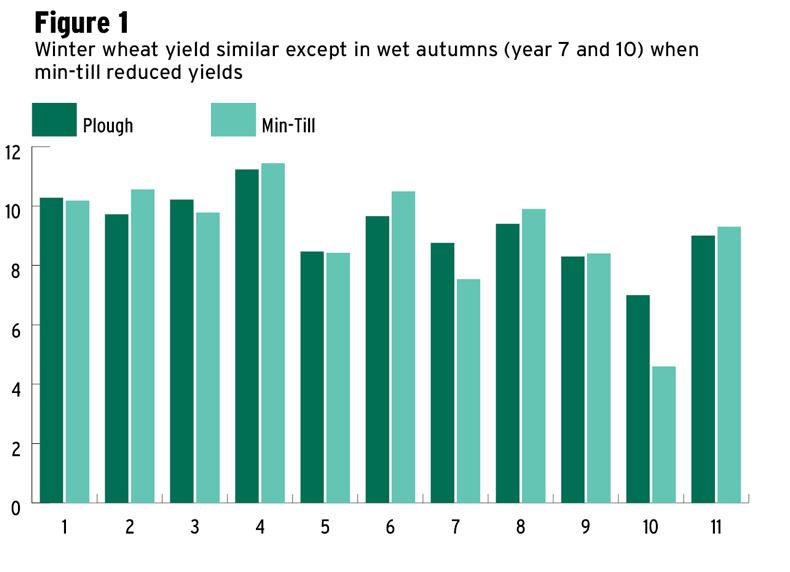
With spring cereals, Oak Park research has shown that it is vital to get the crop established quickly to allow it take up nutrients early and develop good tiller counts. On many soils, ploughing is the most reliable way of achieving that (Figure 2) when compared with relatively shallow min-till systems. Non-ploughing systems could indeed be adapted to improve their reliability compared with ploughing, but on many soils, the level of cultivation intensity may then get close to ploughing.
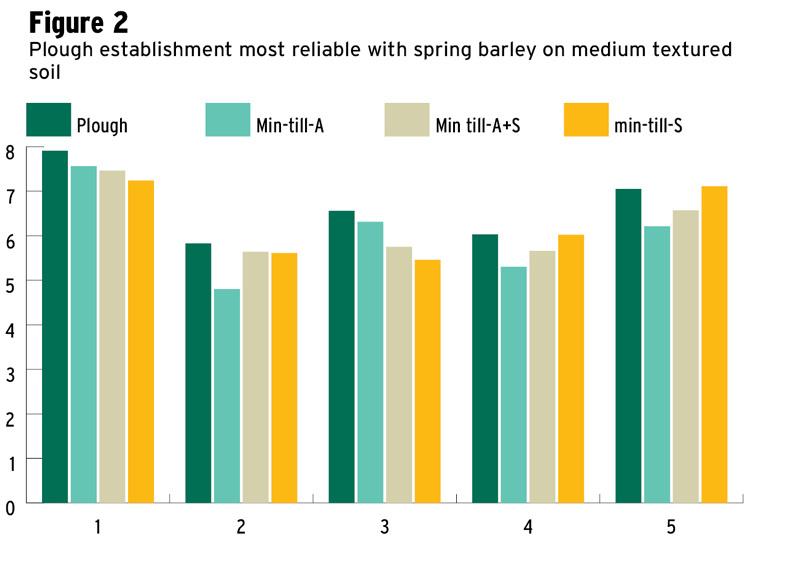
Grass weeds
By far the biggest challenge with non-plough systems is grass weed proliferation, with both winter and spring crops. Sterile brome presents a particular challenge and, if not controlled, can incur costs which would negate any cost savings made from adopting a min-till system. The strip-till system needs to be very carefully managed in this regard, as, if operated without a stale seedbed, grass weeds would rapidly multiply. Also, the wider row structure of the strip-till system can allow more space and light for grass weeds to proliferate, the choice of strip-till system and whether or not the soil between the rows is disturbed will affect weed establishment. Grass weed management is probably the most important aspect of operating non-plough systems. Optimum use of stale seedbeds, crop rotation, herbicide use (and possibly ploughing) is essential to avoid problems.
Power, fuel and labour
Reducing tillage depth and intensity will save fuel and reduce the power input required to establish crops. This can result in substantial cost savings (Fig 3), but if deeper cultivations are required to improve the performance of the system, then the savings will be reduced. The equipment used for min-till or strip-till is easy to scale-up, facilitating high-output systems capable of establishing larger areas of crops in a short time.

Earthworms, slugs and aphids
Reduced cultivation systems can lead to beneficial increases in earthworm populations.
However, this effect is “tillage intensity” related and changes in earthworm numbers are slow. Slug numbers can also increase. Aphids are less attracted to soil partially covered in straw, slightly reducing the threat of autumn barley yellow dwarf virus.
Soil carbon and soil structure
Shallow low-intensity tillage will tend to burn off less soil carbon, resulting in slightly higher soil carbon levels compared with deep and intensively cultivated soil. This effect is small and related to depth and intensity of cultivation, but may be beneficial over time. The aim of direct drill and shallow low-disturbance systems is to allow a more permanent vertical pore structure to develop in soils, thereby improving soil structure. However, in wetter climates with our current practices, this may be difficult to achieve as there may often be a reason to work deeper either continuously or occasionally.
Greenhouse gas emissions
While CO2 production is lower with shallow min-till systems, in our wetter climate, NOX production is often greater as the slightly wetter intact soil structure promotes de-nitrification and some gaseous N loss. In contrast to dryer continental climates where min-till is promoted to reduce GHG emissions, on balance the effect on GHG emissions in our conditions is small.